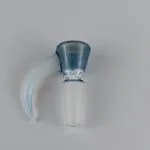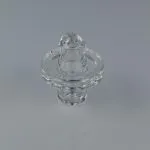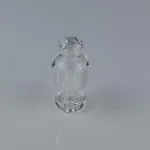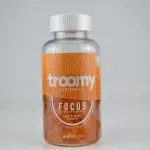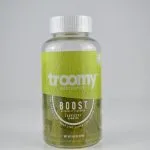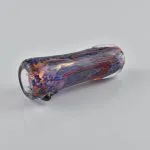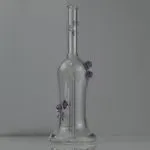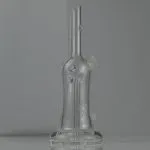Ready to take your mushroom-growing game up a notch? Look no further than the exotic and delicious Lion’s Mane mushroom! This culinary treat is not only one of the most flavorful varieties but also one of the easiest to grow. With just a bit of effort, you could harvest your own Loin Mane in no time flat – so let’s dive right in!
This is a great place to start for those looking for an entry point into growing mushrooms. Lion’s Mane may look intimidating, but don’t let appearances fool you; these mushrooms are easy to cultivate. All that stands between you and success is following our step-by-step guide on how to grow them. We’ll cover everything from choosing the right substrate and setting up your fruiting chamber to harvesting your first crop.
Lion’s Mane mushroom offers potential benefits for cognitive function and memory, reducing inflammation, strengthening your immune system, and nerve regeneration and neuroprotection. Sharpen your gardening tools, folks – we’re about to embark on a journey together with one goal: cultivating magnificent Lion’s Mane mushrooms!
Related: Interested in the power of Lion’s Mane mushrooms? Learn how they can Change Your Life and improve your overall well-being in our comprehensive article.
Table of Contents:
- Is It Possible To Grow Lion’s Mane?
- How To Grow Lion’s Mane Mushroom Cultures
- How to Make Mushroom Liquid Culture From Agar
- How To Grow Lion’s Mane Mushroom Grain Spawn
- Growing Lion’s Mane Mushrooms In A Sawdust Bag
- Caring For Your Sawdust Blocks
- Harvesting Lion’s Mane
- Troubleshooting Lion’s Mane
- Final Thoughts
Is It Possible To Grow Lion’s Mane?
Yes, Lion’s Mane mushrooms can be grown. This edible fungus is the perfect choice for the mushroom cultivation enthusiast looking for a challenge. Its unique shape and texture make it valuable to any growing environment. With patience, dedication, and care, you can successfully cultivate your Lion’s Mane mushrooms at home.
When starting with mushroom growing, choosing the right substrate is essential. Lion’s Mane prefers wood-based substrates like sawdust or hardwood chips; however, they can also be grown on straw. Once the substrate has been chosen, mix in some spawn (the fungal material used to colonize the substrate). The next step is to place the inoculated substrate into bags that must be kept moist with regular misting. It’s also imperative that these bags remain clean during this process and should not come into contact with other plants outside of their environment.
Once properly established in their new environment, Lion’s Mane mushrooms take about 4-6 weeks before bearing fruit bodies ready for harvest. Harvest time varies depending on environmental conditions such as temperature and humidity, but when done correctly, you should have a bountiful supply of delicious edible fungi!
How To Grow Lion’s Mane Mushroom Cultures
Growing Lion’s Mane mycelium on agar is like a delicate dance. It requires careful preparation and attention to detail to get the highest results. Growing cultures is a rewarding process and requires patience.
To grow Lion’s Mane mushrooms, first acquire spores or a mushroom culture from a reputable source, either online or from a local supplier.
Ensure that all equipment, such as jars, Celltreat Sterile Petri dishes, and culture media, is sterilized to prevent unwanted microorganism growth. The preferred culture media for Lion’s Mane mushrooms are Potato Dextrose Agar (PDA) or Malt Extract Agar (MEA), which should be prepared according to the instructions provided.
Prepare your agar plate. This involves mixing powdered agar with water and heating it until it reaches the desired consistency. Next, you must add nutrients to the medium so your mycelium can grow properly. Finally, pour this mixture into Petri dishes or jars and allow it to cool before inoculating it with spores or liquid cultures. Premade agar plates can be purchased here by Mycology Supply.
Once your plates are ready, you can begin culturing mycelium. Inoculate the media with the spores or culture using a sterilized needle or scalpel. Transfer a small piece of mushroom tissue to the media. Seal the containers with the inoculated media and cover the plates with tin foil.
Place them in a dark, warm location (68-77°F or 20-25°C). Allow the media to remain undisturbed for 1-2 weeks to allow the mycelium to grow. White fluffy growths will appear on the surface. This indicates successful colonization by Lion’s Mane mycelium!
Once the mycelium has fully colonized the agar, the next step is to transfer the mycelium using an agar punch to colonize a jar to create a liquid culture.
How to Make Mushroom Liquid Culture From Agar
Mushroom liquid culture is a technique used to propagate mushroom mycelium and create a concentrated solution. This can be used for inoculating a variety of substrates. Here are the steps to make mushroom liquid culture from agar:
To start, you will need lids for your 1000 mL jars. I have found the perfect solution that saves you the hassle of making your own. They are premade, no drilling holes, purchase filters or gaskets, and no assembly is required! Mycology Supply offers culture lids with a filter and injection port built in. Click here to get Mycology Supply Jar Lids.
Next, prepare the liquid culture medium to make a 4% sugar solution. In a large pot, heat 2400 mL of distilled water. Dissolve 100 mL of Karo Light Corn Syrup in the hot distilled water. Mix in 4 grams of soya peptone. This makes 8-quart jars of solution. Fill each quart jar with 300 mL of sugar solution. Place the lid on the jar, screw on the lid ring, and place tin foil over the top of the lid.
Using a pressure cooker, sterilize the containers and medium. Add a few quarts of water to the pressure cooker bottom. Place the containers with the liquid culture medium into the pressure cooker and sterilize for at least 25 minutes at 15 psi. Allow the pressure cooker to cool to room temperature. Retighten any loose lids so they remain sterilized.
Once the containers have cooled to room temperature, inoculate the liquid culture medium next to a laminar flow hood. If you are just getting started and need to purchase a laminar flow hood, Mycology Supply has the best flow on the market at a low cost. Click here for the entry-level hobbyist laminar flow hood from Mycology Supply.
Sterilize your work area, tools, and jars with 70% rubbing alcohol. Use a scalpel to remove a small piece of mycelium from the agar plate and transfer it into the liquid culture medium. Sterilize the scalpel after each transfer with a blow torch.
Incubate the liquid culture at room temperature in a dark place for 4-8 weeks until the mycelium colonizes the liquid culture medium. Once the mycelium has colonized the liquid culture medium, the liquid culture can be stored in a refrigerator for later use. It can also be used immediately to inoculate a substrate for mushroom cultivation. Shake the jar periodically to break up the mycelium.
It’s critical to note that with liquid culture, you can’t tell by looking at it if it’s contaminated. Test each jar using a small grain jar. It won’t take long to notice contaminants growing.
Overall, making liquid mushroom culture from agar is an effective way to propagate mushroom mycelium. It also creates a concentrated solution that can be used to inoculate grain spawn. It is critical to maintaining sterile conditions throughout the process to prevent contamination and ensure successful mycelium growth.
How To Grow Lion’s Mane Mushroom Grain Spawn
Using the liquid culture from agar or a mushroom supplier is necessary to grow Lion’s Mane mushroom grain spawn.
To begin, obtain lids for your jars. Fortunately, there’s a convenient option available that eliminates additional effort on your part. You won’t have to create your own lids, drill holes, purchase filters or gaskets, or engage in any assembly. Mycology Supply provides culture lids equipped with a built-in filter and injection port. Click here to get Mycology Supply Jar Lids.
The most commonly used grain for Lion’s Mane is rye, although millet, wheat, or barley can also be utilized. Soak the grain in water for at least 12 hours, then simmer the grain at a low temperature on the stove for 15 minutes. This softens the grains for mycelium growth. Using a strainer to drain the grains, let them dry for an hour.
Fill the jars ¾ full with the grain. Leave enough space to allow room for shaking the grain. Shaking the jars can speed up colonization. Close the lid and wrap tin foil around the lid.
Sterilization is a crucial step in growing Lion’s Mane mushroom grain spawn, as it ensures that the jars and the grain are free of any contaminants that may interfere with the mycelium growth.
One of the most effective sterilization methods is using a pressure cooker. To sterilize the jars, place them in the pressure cooker. Close the lid, bring the pressure up to 15 psi, and maintain this pressure for at least 90 minutes.
After sterilizing, allow the jars to cool to room temperature before inoculating them with Lion’s Mane liquid culture. This step is critical to avoid killing the culture due to high temperatures.
Once the containers have cooled to room temperature, inoculate the grain spawn with the liquid culture medium next to a laminar flow hood or in a sterile air box. Place a long needle on a 10cc syringe. Sterilize the needle with a blow torch, and cool the needle with a rubbing alcohol-soaked paper towel. Insert the needle into the self-healing port of the liquid culture. Fill with 5cc of liquid culture.
Inject the grain with the liquid culture through the grain jar’s self-healing port. After injection, store the jars at room temperature until they show signs of colonization by white mycelium strands – usually within two weeks, depending on temperature and conditions.
Lastly, transfer these newly colonized jars into large plastic bags filled with moist sawdust-based substrates such as hardwood chips or straws, which will serve as a food source for continued mycelium growth. If you’re not interested in making your own grain spawn, Mycology Supply has Lion’s Mane grain spawn for sale.
Growing Lion’s Mane Mushrooms In A Sawdust Bag
Growing Lion’s Mane mushrooms in a sawdust bag is an excellent way to cultivate these delicious fungi. To get started, you’ll need a few basic materials: mushroom spawn, sawdust, soy hulls, gypsum, filter patch bags, and an Vestil ISEAL Impulse Sealer. Here is the sawdust block recipe to get you started:
Sawdust Block recipe:
Ingredients:
- Five cups of hardwood sawdust (oak, maple, or beech)
- One cup of soy hulls or wheat bran
- 1 cup of gypsum (calcium sulfate)
- Six cups of water
First, gather your materials. You’ll need sawdust (preferably hardwood like oak, maple, or beech), soy hulls or wheat bran, gypsum (calcium sulfate), a large bag, Lion’s Mane spawn, and a pressure cooker.
Mix all the sawdust, soy hulls, and gypsum in a large bowl. Pour the mixture into the filter patch bag. Pour six cups of water over the mixture. Remove as much air from the bag and fold the top under the bottom of the bag.
Next, sterilize the sawdust mixture in a pressure cooker at 15 psi for at least 2 ½ hours. Let the mixture cool to room temperature. Inoculate the bag by adding 1 ½ cups of Lion’s Mane spawn, then seal the top of the bag with an impulse sealer. Shake the bag thoroughly to mix the spawn.
Incubate the bag in a warm, dark place for about 14-20 days or until Lion’s Mane mycelium fully colonizes the sawdust mixture. Keep an eye on the bag for contamination signs.
When the sawdust mixture is fully colonized, initiate fruiting by cutting small slits in the bag. Make one to two cuts on each long edge of the bag and one small cut on each short edge. This will allow air circulation and mushroom growth.
Lion’s Mane mushrooms require high humidity levels to grow. For optimal growth, maintain a humidity level of around 80% by spraying each cut in the bag or fruiting the body with water regularly. Harvest the mushrooms when fully grown before they turn brown or release spores.
There you have it! You can grow a bountiful harvest of fresh Lion’s Mane mushrooms with patience and attention to detail. Go forth and get your hands dirty – your taste buds will thank you!
Caring For Your Sawdust Blocks
Caring for sawdust blocks is essential when cultivating Lion’s Mane mushrooms. Here are four tips to get the most productive harvest:
- Keep them moist – Lion’s Mane mushrooms require a moist environment to thrive, so it’s imperative to mist or water your blocks regularly with filtered water. The more humid and warmer the environment, the better they grow!
- Monitor temperature levels – Pay attention to the average temperature levels in your growing area, as this can majorly affect how well your mushrooms grow. Use a fan or another cooling device to keep things consistent and comfortable for your fungi friends!
- Lighting – make sure that direct sunlight isn’t shining on them too long during the day, as this could dry them out quickly; indirect natural or artificial lighting should do just fine!
Now that you know these essential care tips for growing Lion’s Mane mushrooms from sawdust blocks, why not try it? With proper care, maintenance, and patience, you’ll get delicious mushrooms ready to eat!
Harvesting Lion’s Mane
Harvesting Lion’s Mane mushrooms is an art form requiring patience and attention. Once the mushrooms reach a desirable size, they can be harvested easily. It should be noted that Lions Mane grows in bunches and clusters; twist the fruiting body until it breaks off.
Once collected, you will need to clean off any loose dirt or debris around the cap of each mushroom using a soft brush or cloth. Then lay your mushrooms out on paper towels to dry – this process typically takes several hours, depending on the humidity levels in your home. If you’d like to speed up the drying process, place them under low heat for 30 minutes before transferring them to a paper towel.
The final step before storing your freshly-harvested Lions Mane is cutting off their stems if needed. This can help preserve moisture levels during storage while increasing shelf life by preventing spoilage. Be sure not to cut too close to the base of the caps to avoid damaging the gills beneath! And there you have it: your delicious stash of homegrown Lions Mane mushrooms ready for consumption anytime!
Troubleshooting Lion’s Mane
Cultivating Lions Mane mushrooms can be a rewarding experience, but sometimes even the most experienced mushroom grower may face some issues along the way. Fortunately, there are several troubleshooting tips to help you overcome any potential problems with your crop!
First, if your Lion’s Mane isn’t growing as expected, look at its environment. Make sure it’s getting enough light and air circulation for optimal growth. Adjust the temperature and humidity levels within your cultivation space to ensure your Lion’s Mane receives all the essential nutrients it needs. This will also help prevent common illnesses such as mold or mildew from affecting mushroom growth.
Next up: pay attention to pests that might invade your cultivation area and disrupting your Lion’s Mane development–from mites and slugs to flies and other insects. Do whatever you can to eradicate them before they damage your crop. Simple measures like sealing cracks in doors/windows or using mesh screens can contribute a long way towards keeping these unwanted critters away from your precious fungi!
Finally, experiment with different substrates such as straw or sawdust––to find what works best for cultivating Lions Mane mushrooms regarding nutrient availability and texture. Try out various methods until you find one that yields the desired results! With dedication and determination (and perhaps some luck!), you’ll harvest delicious Lion’s Mane mushrooms in no time!
Final Thoughts
Growing Lion’s Mane mushrooms is rewarding and enjoyable. It requires patience, but if you follow the steps outlined in this article carefully, you can successfully cultivate these delicious fungi.
My advice to anyone interested in growing their Lion’s Mane mushrooms is to start small and work your way up as you gain confidence and skill. You’ll also need to monitor your cultures for any signs of contamination or other issues that could arise during cultivation. Taking care of them will guarantee a successful harvest!
Related Articles:




